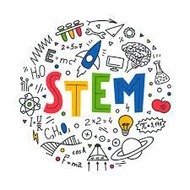
(View Complete Item Description)
A learning activity for the "All About Earth: Our World on Stage" book in the Elementary GLOBE series. In pairs, students will create experimental conditions in terrariums in order to study what plants need to live. Variables to study include the presence or absence of soil, water, and sunlight. Students will record the growth of radish plants as well as observations of "the water cycle" in their terrariums. At the conclusion of their experiments, students will share their results with the class and discuss how water, Earth materials, and air are all necessary to support living things. The purpose of the activity is to acquaint students with the hydrosphere, geosphere, atmosphere, and biosphere more closely, to have students use microcosms to study natural phenomena, and to introduce students to the concept of a "fair test" in a scientific investigation. After completing this activity, students will know about the importance of the hydrosphere, geosphere, and atmosphere in supporting the biosphere. They will learn how to set up "fair test", record detailed observations, use drawings as scientific records, make sense of experimental results, and share them publicly.
Material Type:
Activity/Lab,
Diagram/Illustration,
Interactive,
Lesson Plan,
Textbook




















